Leptospermum
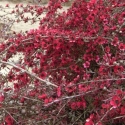
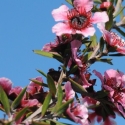
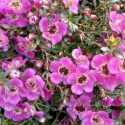
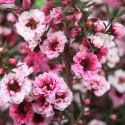
READ MORE
READ LESS
Special Bulk Deal... SHOW ME
Selected natives @ $9.99, 10 for $8 each, 30 for $7 each
PAGE 1 10 PER PAGE aka Manuka or Tea tree With its medium to large bright pink flowers on long stems in mid Spring, Andromeda makes a stunning display as a specimen or in a bulk landscape. Will definitley bring the bees into you garden. Erect growth habit. Evergreen. Leptospermum Andromeda Expected Stock Height: 20/30 cm ? Currently sold out. Add to your waitlist to be advised when next in stock. aka Manuka or Tea Tree Native. One of the best varieties for pot growing. Large, soft double pink flowering manuka. The bushy growth makes it perfect for a spectacular hedge, or just as at home as a specimen in the garden. Prune lightly after flowers for best shape.
Leptospermum Blossom Expected Stock Height: 60/70 cm ? Currently sold out. Add to your waitlist to be advised when next in stock. aka Manuka or Tea tree 'Blushing Star' has been selected as a variety which is particularly good at producing an abundance of flowers which smother the tops of the arching branches during the spring months. The flowers are a soft blush pink with a deep maroon centre. Evergreen.
Leptospermum Blushing Star Expected Stock Height: 5/10 cm ? Currently sold out. Add to your waitlist to be advised when next in stock. aka Manuka or Tea Tree Native. Manuka AKA Tea Tree. Exquisite double flowers that start appearing in late winter and continue through to the spring. The flowers are in tones of burgundy-red and are complemented by the dainty deep bronze aromatic foliage. Happy in the sun. Evergreen.
Leptospermum Burgundy Queen Expected Stock Height: 80/100 cm ? Currently sold out. Add to your waitlist to be advised when next in stock. Leptospermum Burgundy Queen Expected Stock Height: 50/60 cm ? Currently sold out. Add to your waitlist to be advised when next in stock. aka Manuka or Tea Tree Native. Also known as tea tree, Manuka, New Zealand Tea Tree. Cerise margins, white petals with dark eyes and prominent eye lashes. Prune lightly after flowering for best shape. Moderately fertile, likes well drained neutral or acid soil in full sun or partial shade. Evergreen. Leptospermum Centaurus Expected Stock Height: 30/40 cm ? Currently sold out. Add to your waitlist to be advised when next in stock. aka Manuka or Shiny Tea Tree The Australian Silky Tea Tree is a graceful, open, evergreen tree with stunning red bronze foliage. In summer masses of single white flowers with green centres smother the branches and make the bees happy. Quite tolerant but happiest in the sun with good drainage.
Leptospermum Coppersheen Current Stock Height: 30/40 cm ? Container: 4l ? $29.99 aka Manuka or Tea Tree Native. Expect a spectacular spring display from this hardy little shrub that has fully double candy-striped flowers in shades of pink and red. Dark green aromatic foliage. Easy to grow in a sunny spot. Evergreen.
Leptospermum Coral Candy Expected Stock Height: 80/110 cm ? Currently sold out. Add to your waitlist to be advised when next in stock. aka Tea Tree or Manuka Native. A compact bushy evergreen shrub with narrow pointed leaves of reddish bronze. In spring double crimson red flowers appear en masse. Plant in a sunny spot in well drained soil. Quite tolerant and reasonably hardy to light frost. Evergreen.
Leptospermum Crimson Glory Expected Stock Height: 60/80 cm ? Currently sold out. Add to your waitlist to be advised when next in stock. aka Manuka, New Zealand Tea Tree Native. An attractive evergreen shrub that will brighten up the garden in the dull winter months. This small upright teatree clothes itself with masses of white flowers in spring. Cygnus is hardy and will grow in most soil types. Evergreen. PVR Leptospermum Cygnus Current Stock Height: 25/35 cm ? Container: 3.3l ? $39.99 Stock of this item is very low. aka Manuka, Tea Tree Evergreen shrub that is fast growing with a semi-pendulous growth habit, dark purple foliage and bearing single, large pink flowers from Spring. Tolerates droughts once established and may be grown in coastal locations. Ideal for planting out to create hedges and screens. Leptospermum Dark Knight Expected Stock Height: 25/35 cm ? Currently sold out. Add to your waitlist to be advised when next in stock. aka Manuka or Tea Tree Native. An attractive shrub that will brighten up the garden in the dull winter months. The foliage is a deep burgundy bronze tone and the flowers start appearing in winter are a vivid intense shade of red. Flowers right through to spring. Hardy and easy to grow in a sunny spot. Evergreen. PVR. Leptospermum Electric Red Current Stock Height: 15/25 cm ? Container: 2.5l ? $26.99 aka Manuka or Tea Tree Native. Manuka AKA Tea Tree. From the Far North of NZ this evergreen shrub has large soft pink flowers with wavy petals borne in profusion during winter and spring. Quite an open growth habit with light green foliage. Happiest in the sun and copes well with wind.
Leptospermum Keatleyii Expected Stock Height: 40/60 cm ? Currently sold out. Add to your waitlist to be advised when next in stock. aka Manuka or Tea Tree Magellan, often called tea tree, features pink blooms. Bright lolly pink flower petals which have a tinge of mauve. Grow in well drained soil. A small tree variety that reaches an average mature height of about 2.6m. Evergreen. PVR
Leptospermum Magellan Current Stock Height: 20/25 cm ? Container: 3.3l ? $39.99 aka Manuka or Tea Tree Outstanding shrub for all seasons, magnificent when in full bloom. Rich pink to red flowers are single in form and appear abundantly from late winter through spring. A fine choice for individual or mass planting. Try also in containers for patio decor. Evergreen Leptoseprmum Martinii Expected Stock Height: 80/110 cm ? Currently sold out. Add to your waitlist to be advised when next in stock. aka Manuka or Tea Tree Native. An unusual form of our native Manuka (Tea Tree) which has a low semi-prostrate habit that makes it ideal for cascading over walls and banks. Can also be used in rock gardens or as a ground cover. The foliage is tiny, narrow and pointed, the flowers are white with dark centres. Evergreen. Leptospermum Mercury Is Expected Stock Height: 10/15 cm ? Currently sold out. Add to your waitlist to be advised when next in stock. aka Manuka or Tea Tree Aust. Native. Merinda has vibrant magenta flowers that cover the bush in colour. Flowers occur in late spring. Early growth of this plant is spreading or cascading but will develop into a small shrub. Frost tolerant.
Leptospermum Merinda Current Stock Height: 25/30 cm ? Container: 3.3l ? $39.99 aka Manuka or Tea Tree Mesmer Eyes is a low spreading shrub that makes a great screen plant and is a spectacular sight in spring when in flower. Upright habit with small mid-green leaves and stunning large white flowers that age to pink. Perfect for pot culture or as a feature plant in the garden. Likes a sunny spot in moist soil. Evergreen. PVR App
Leptospermum Mesmereyes Current Stock Height: 15/20 cm ? Container: 3.3l ? $39.99 aka Manuka or Tea Tree Native. An attractive and compact form of Manuka with single flowers in a deep pink shade. The tiny needles of foliage have a purple-red hue. Quite tolerant and easy to grow as long as it has a sunny spot. Evergreen.
Leptospermum Nanum Elizabeth Jane Current Stock Height: 25/30 cm ? Container: 2.5l ? $24.99 aka Manuka or Tea Tree Native. A little compact evergreens shrub with single pale pink flowers from autumn through to winter. The foliage is small and pointed and coloured a bronze green tone. Easy to grow in a sunny spot.
Leptospermum Kea Current Stock Height: 10/15 cm ? Container: 2.5l ? $29.99 aka Manuka or Tea Tree Native. Delightful dwarf 'Manuka' which has a profusion of single deep pink flowers from late spring through to summer. Foliage is tiny, pointed and a deep dark green. Easy to grow in just about any soil but likes a sunny spot. Evergreen.
Leptospermum Nanum Ruru Expected Stock Height: 10/15 cm ? Currently sold out. Add to your waitlist to be advised when next in stock. aka Manuka or Tea Tree Native. AKA Tea Tree. This dwarf form of Tea Tree has single white, pink-flushed flowers with a dark eye that appear during spring. Upright growth habit and very free flowering, tolerating most soil types and conditions. Evergreen.
Leptospermum Nanum Tui Expected Stock Height: 30/45 cm ? Currently sold out. Add to your waitlist to be advised when next in stock. Leptospermum Nanum Tui Expected Stock Height: 10/15 cm ? Currently sold out. Add to your waitlist to be advised when next in stock. aka Manuka or Tea Tree Australian Native. This New Release stunning upright Leptospermum which smothers itself in masses of deep red flowers in mid-late spring. Suited t most soil types in full sun. Would make an attractive screen plant. Trim back after flowering to shape and size. Evergreen Leptospermum Outrageous Expected Stock Height: 25/30 cm ? Currently sold out. Add to your waitlist to be advised when next in stock. aka Manuka or Tea Tree Native. Attractive low spreading shrub that has a spectacular display in spring, particularly good at producing an abundance of purple flowers which smother the tops of the spreading branches. Plant in a sunny spot in well drained soil. Quite tolerant and hardy to light frost. Evergreen. Leptospermum Pageant Expected Stock Height: 15/25 cm ? Currently sold out. Add to your waitlist to be advised when next in stock. aka Manuka or Tea Tree A lovely little form of Tea Tree that has masses of flowers in spring through to autumn in tones of pink and dark pink. The small stiff leaves are in bronze green tones set on cascading branches making this a most attractive plant to tumble over banks and walls. Loves the sun. Hardy and evergreen.
Leptospermum Pink Beauty Expected Stock Height: 30/40 cm ? Currently sold out. Add to your waitlist to be advised when next in stock. aka Manuka or Tea Tree Native. An unusual form of our native Manuka (Tea Tree) which has a low semi-prostrate habit that makes it ideal for cascading over walls and banks. Can also be used in rock gardens or as a ground cover. The foliage is tiny, narrow and pointed, the flowers are in tones of rose red and pink. Evergreen.
Leptospermum Pink Cascade Current Stock Height: 10/15 cm ? Container: 2.5l ? $26.99 Stock of this item is very low. aka Manuka or Tea Tree Native. A lovely little tree that will delight with masses of double white flowers in winter and spring. The flowers have a maroon centre and will be much loved by bees. Aromatic dark green foliage with bronze tones. Plant in the sun, tolerant, hardy and evergreen. Suitable for coastal gardens.
Leptospermum Princess Anne Current Stock Height: 15/20 cm ? Container: 2.5l ? $26.99 aka Manuka or Tea Tree If you want a profusion of double crimson blooms from August until December then this is a great little shrub to add to your planting scheme. The flowers are beautifully complemented by the bronze foliage. Good compact, upright habit. Happiest a sunny position. Evergreen. Leptospermum Red Damask Expected Stock Height: 30/40 cm ? Currently sold out. Add to your waitlist to be advised when next in stock. aka Manuka or Tea Tree Native. Early vibrant red single flower, dark green/burgundy foliage.Grows happily in full sun and prefers not to be let to dry out. Flowering during late autumn and shows some flowers during winter building to a peak in Spring. H 2m Leptospermum Red Ensign Expected Stock Height: 40/50 cm ? Currently sold out. Add to your waitlist to be advised when next in stock. aka Manuka or Tea Tree Bright single red flowers on ornamental dark foliage make this prostrate ground cover a good choice for cascading over walls or covering banks. The flowers appear in late winter. Will grow in most soils as long as well drained. Prefers sun. Can be trimmed to keep tidy if you wish. Evergreen.
Leptospermum Red Falls Expected Stock Height: 10/15 cm ? Currently sold out. Add to your waitlist to be advised when next in stock. Leptospermum Red Falls Expected Stock Height: 10/15 cm ? Currently sold out. Add to your waitlist to be advised when next in stock. aka Manuka or Tea Tree Native. Green foliage with double flowers ranging from pink to dark pink. Grows happily in full sun and prefers not to dry out. Flowering during late autumn and showing some flowers during winter, building to a peak in Spring. H 2.0m Leptospermum Rosy Morn Expected Stock Height: 40/50 cm ? Currently sold out. Add to your waitlist to be advised when next in stock. aka Manuka or Tea Tree Native. Call it Tea Tree or call it Manuka or even by its botanical name of Leptospermum this ubiquitous native tree is a familar site in our landscape. The scented white flowers that appear in summer attract bees that produce delicious honey. Will grow almost anywhere. Evergreen.
Leptospermum Scoparium Current Stock Height: 60/75 cm ? Container: 0.5l ? $9.99 10+ @ 8.00 each aka Manuka or Tea Tree A native evergreen shrub bearing double, pure white flowers throughout Winter and into Spring. Has a bushy, upright growth habit and may be grown as a feature plant or planted out to create hedges and screens, plus they are suitable for growing in coastal locations. Leptospermum Snow Flurry Current Stock Height: 30/40 cm ? Container: 2.5l ? $24.99 An upright semi spreading shrub that is very prolific in flowering gorgeous pink flowers from early Spring through Summer. Reasonably hardy and will tolerate some shade but best in full sun. Prune for shape and size after flowering has finished. A great plant for enticing the bees into your garden. Leptospermum spectabile Pink Current Stock Height: 25/30 cm ? Container: 3.3l ? $39.99 aka Manuka or Tea Tree An Australian cultivar of Tea Tree that has beautiful double flowers that appear from autumn through to spring. The flowers are in tones of white and pink. Neat and tidy green foliage - loves a sunny spot in the garden - trim lightly after flowering. Tolerant of coastal conditions. Evergreen.
Leptospermum Sunraysia Expected Stock Height: 50 /60 cm ? Currently sold out. Add to your waitlist to be advised when next in stock. aka Manuka or Tea Tree Aussie Native. Attractive upright growing shrub with masses of vibrant pink flowers in winter through to spring. Could be grown as a feature plant, or pruned to form a pretty flowering hedge. Hardy shrub that will grown in most soil types. Evergreen. Leptospermum Tickled Pink Expected Stock Height: 20/30 cm ? Currently sold out. Add to your waitlist to be advised when next in stock. aka Manuka or Tea Tree Native. Manuka AKA Tea Tree. Small, single bright red flowers from winter to spring. Neat and tidy green foliage, hardy and easy to grow. Prefers a sunny spot and a little trim after flowering. Evergreen.
Leptospermum Wiri Donna Expected Stock Height: 80/100 cm ? Currently sold out. Add to your waitlist to be advised when next in stock. aka Manuka or Tea Tree Native. Manuka AKA Tea Tree. Small, bright red double flowers open from tight buds in winter bringing some much needed colour to the garden. Neat and tidy green foliage, hardy and easy to grow. Prefers a sunny spot and a little trim after flowering. Evergreen.
Leptospermum Wiri Joan Expected Stock Height: 60/80 cm ? Currently sold out. Add to your waitlist to be advised when next in stock. Leptospermum Wiri Joan Expected Stock Height: 60/80 cm ? Currently sold out. Add to your waitlist to be advised when next in stock. aka Manuka or Tea Tree Native. Tea Tree AKA Manuka. Delightful evergreen shrub with a free flowering and compact habit. Double red flowers appear in spring and in autumn offset by dainty bronze foliage. Easy to grow in a sunny spot and quite hardy. Bred by Jack Hobbs from the Botanic Gardens in Manurewa, Auckland.
Leptospermum Wiri Kerry Current Stock Height: 15/20 cm ? Container: 2.5l ? $29.99 aka Manuka or Tea Tree Native. Manuka AKA Tea Tree. Attractive evergreen shrub with showy double white ruffled blooms in autumn and spring. Dainty fresh green foliage and a neat and tidy habit. From the breeding programme at the Manurewa Botanic Gardens. Happiest in the sun.
Leptospermum Wiri Linda Current Stock Height: 655/65 cm ? Container: 2.5l ? $24.99 aka Manuka or Tea Tree Native. Wiri Shelly has an erect compact habit, reaching about 6 feet at maturity. Small leaves are dark green, single pink flowers with dark red centers appear in late winter and spring. Prefers full sun to part shade position, drought tolerant once established. Evergreen Leptospermum Wiri Shelly Expected Stock Height: 70/90 cm ? Currently sold out. Add to your waitlist to be advised when next in stock. aka Manuka or Tea Tree Native. Manuka AKA Tea Tree. Attractive evergreen shrub with large single white flowers in autumn and spring. Dainty fresh green foliage and a neat and tidy habit. Happiest in the sun, hardy and easy to grow.
Leptospermum Wiri Susan Expected Stock Height: 40/60 cm ? Currently sold out. Add to your waitlist to be advised when next in stock.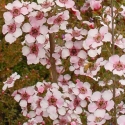
Prune after flowering to ensure good flowering for the following season.
Habit: Upright
Leaves: Evergreen, Green
Mature Size 7-10 yrs (HxW): 2m x 1.5m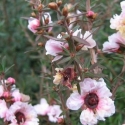
Habit: Bushy
Leaves: Evergreen, Green
Mature Size 7-10 yrs (HxW): 1.5m x 2m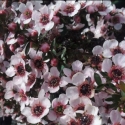
Habit: Bushy
Leaves: Evergreen, Green
Mature Size 7-10 yrs (HxW): 1.5m x 2m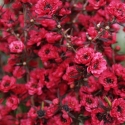
Habit: Upright
Leaves: Evergreen, Brown
Mature Size 7-10 yrs (HxW): 2m x 1.5m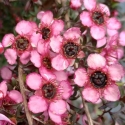
Habit: Bushy
Leaves: Evergreen, Green
Mature Size 7-10 yrs (HxW): 1.5m x 2m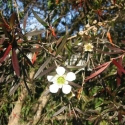
'Coppersheen' looks good as a single specimen and the foliage colour combines well with other garden colours. Equally it looks great as a closely planted screen or hedge and for this purpose it trims very well.
Habit: Upright
Leaves: Evergreen, Red
Mature Size 7-10 yrs (HxW): 2.5m x 2m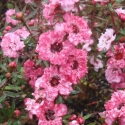
Habit: Upright
Leaves: Evergreen, Green
Mature Size 7-10 yrs (HxW): 1.5m x 1m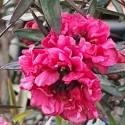
Habit: Compact
Leaves: Evergreen, Brown
Mature Size 7-10 yrs (HxW): 100cm x 100cm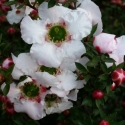
PVR:
Habit: Bushy
Leaves: Evergreen, Green
Mature Size 7-10 yrs (HxW): 1.5m x 2m
Suitable for growing in either full sun or partial shade adapting well to wide range of soil conditions.
Habit: Weeping
Leaves: Evergreen, Dark
Mature Size 7-10 yrs (HxW): 2m x 1.2m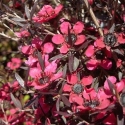
PVR:
Habit: Upright
Leaves: Evergreen, Red
Mature Size 7-10 yrs (HxW): 2.5m x 1m
Habit: Upright
Leaves: Evergreen, Green
Mature Size 7-10 yrs (HxW): 3m x 1.5m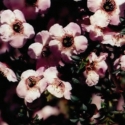
PVR:
Habit: Bushy
Leaves: Evergreen, Green
Mature Size 7-10 yrs (HxW): 2.6m x 2.6m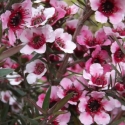
Habit: Bushy
Leaves: Evergreen, Green
Mature Size 7-10 yrs (HxW): 2m x 1.5m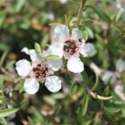
Habit: Weeping
Leaves: Evergreen, Green
Mature Size 7-10 yrs (HxW): cm x cm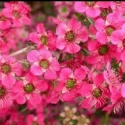
Habit: Weeping
Leaves: Evergreen, Green
Mature Size 7-10 yrs (HxW): 100cm x 100cm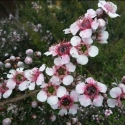
Habit: Groundcover
Leaves: Evergreen, Green
Mature Size 7-10 yrs (HxW): 1.5m x 1.5m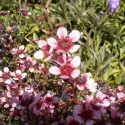
Habit: Compact
Leaves: Evergreen, Brown
Mature Size 7-10 yrs (HxW): 45cm x 45cm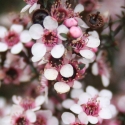
Habit: Compact
Leaves: Evergreen, Brown
Mature Size 7-10 yrs (HxW): 30cm x 45cm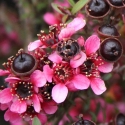
Habit: Compact
Leaves: Evergreen, Green
Mature Size 7-10 yrs (HxW): 30cm x 45cm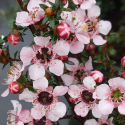
Habit: Upright
Leaves: Evergreen, Green
Mature Size 7-10 yrs (HxW): 45cm x 45cm
Habit: Upright
Leaves: Evergreen, Green
Mature Size (HxW): 1.8m x 1.8m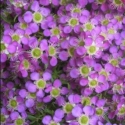
Habit: Groundcover
Leaves: Evergreen, Green
Mature Size (HxW): 1.5m x 2m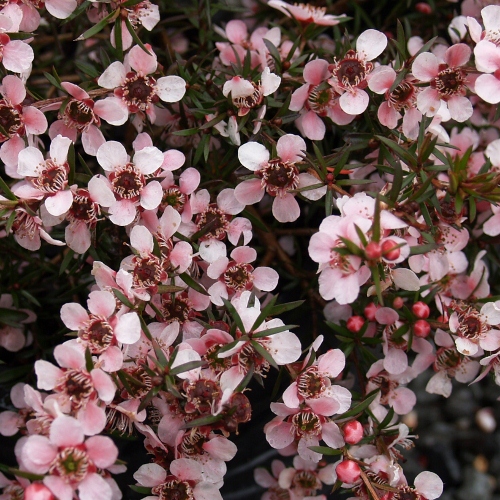
Habit: Groundcover
Leaves: Evergreen, Green
Mature Size 7-10 yrs (HxW): 50cm x 150cm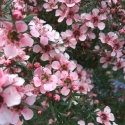
Leaves: Evergreen, Green
Mature Size 7-10 yrs (HxW): 60cm x 90cm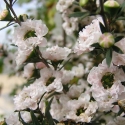
Habit: Upright
Leaves: Evergreen, Green
Mature Size 7-10 yrs (HxW): 2m x 2m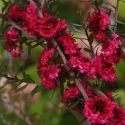
Habit: Upright
Leaves: Evergreen, Green
Mature Size 7-10 yrs (HxW): 2m x 1.5m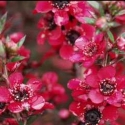
Leaves: Evergreen, Green
Mature Size 7-10 yrs (HxW): 2m x 1.5m
Habit: Spreading
Leaves: Evergreen, Green
Mature Size 7-10 yrs (HxW): 50cm x 150cm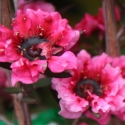
Habit: Upright
Leaves: Evergreen, Green
Mature Size 7-10 yrs (HxW): 2m x 1.5m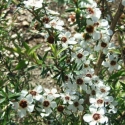
Habit: Upright
Leaves: Evergreen, Green
Mature Size 7-10 yrs (HxW): 5m x 3m
30+ @ 7.00 each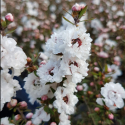
Habit: Bushy
Leaves: Evergreen, Green
Mature Size 7-10 yrs (HxW): 2.5m x 2.5m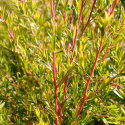
Habit: Upright
Leaves: Evergreen, Green
Mature Size (HxW): 1.5m x 1.5m
Habit: Upright
Leaves: Evergreen, Green
Mature Size 7-10 yrs (HxW): 2m x 1.5m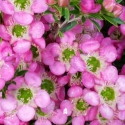
Habit: Upright
Leaves: Evergreen, Green
Mature Size (HxW): 1.5m x 1.5m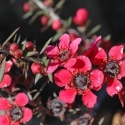
Habit: Upright
Leaves: Evergreen, Green
Mature Size 7-10 yrs (HxW): 1.5m x 1.5m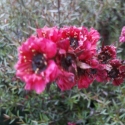
Habit: Upright
Leaves: Evergreen, Green
Mature Size 7-10 yrs (HxW): 2m x 1.5m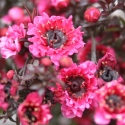
Habit: Compact
Leaves: Evergreen, Brown
Mature Size 7-10 yrs (HxW): 100cm x 100cm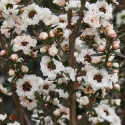
Habit: Upright
Leaves: Evergreen, Green
Mature Size 7-10 yrs (HxW): 2m x 1.5m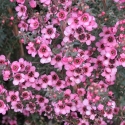
Habit: Upright
Leaves: Evergreen, Green
Mature Size (HxW): 2m x 1.5m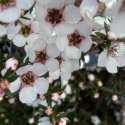
Habit: Upright
Leaves: Evergreen, Green
Mature Size 7-10 yrs (HxW): 2m x 1.5m
PAGE 1 10 PER PAGE
HL Nurseries Limited t/a Wairere Nursery
826 Gordonton Road, R D 1, Hamilton 3281 Ph: (07) 824 3430 Email: